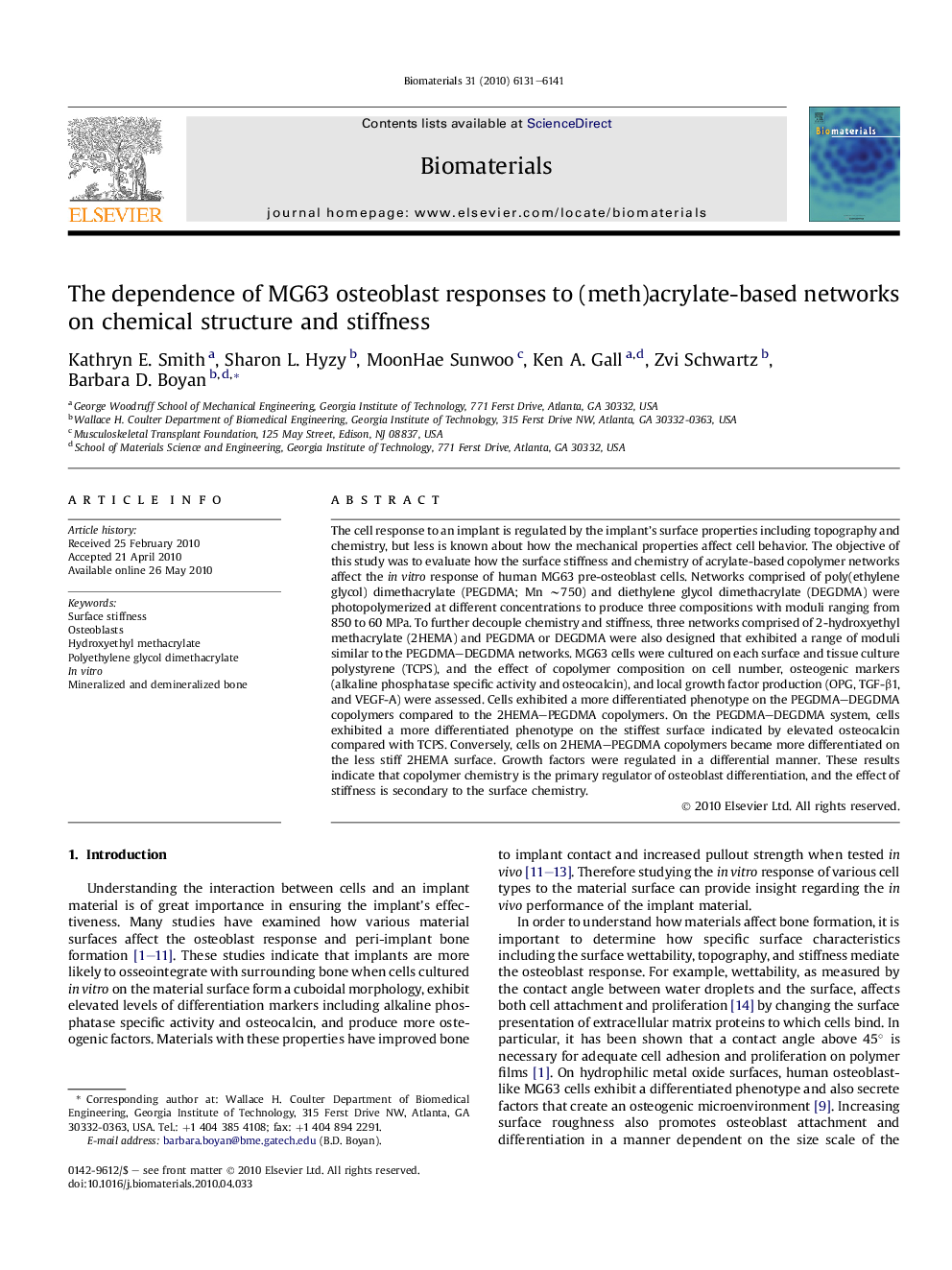| کد مقاله | کد نشریه | سال انتشار | مقاله انگلیسی | نسخه تمام متن |
|---|---|---|---|---|
| 9277 | 624 | 2010 | 11 صفحه PDF | دانلود رایگان |

The cell response to an implant is regulated by the implant’s surface properties including topography and chemistry, but less is known about how the mechanical properties affect cell behavior. The objective of this study was to evaluate how the surface stiffness and chemistry of acrylate-based copolymer networks affect the in vitro response of human MG63 pre-osteoblast cells. Networks comprised of poly(ethylene glycol) dimethacrylate (PEGDMA; Mn ∼750) and diethylene glycol dimethacrylate (DEGDMA) were photopolymerized at different concentrations to produce three compositions with moduli ranging from 850 to 60 MPa. To further decouple chemistry and stiffness, three networks comprised of 2-hydroxyethyl methacrylate (2HEMA) and PEGDMA or DEGDMA were also designed that exhibited a range of moduli similar to the PEGDMA–DEGDMA networks. MG63 cells were cultured on each surface and tissue culture polystyrene (TCPS), and the effect of copolymer composition on cell number, osteogenic markers (alkaline phosphatase specific activity and osteocalcin), and local growth factor production (OPG, TGF-β1, and VEGF-A) were assessed. Cells exhibited a more differentiated phenotype on the PEGDMA–DEGDMA copolymers compared to the 2HEMA–PEGDMA copolymers. On the PEGDMA–DEGDMA system, cells exhibited a more differentiated phenotype on the stiffest surface indicated by elevated osteocalcin compared with TCPS. Conversely, cells on 2HEMA–PEGDMA copolymers became more differentiated on the less stiff 2HEMA surface. Growth factors were regulated in a differential manner. These results indicate that copolymer chemistry is the primary regulator of osteoblast differentiation, and the effect of stiffness is secondary to the surface chemistry.
Journal: Biomaterials - Volume 31, Issue 24, August 2010, Pages 6131–6141